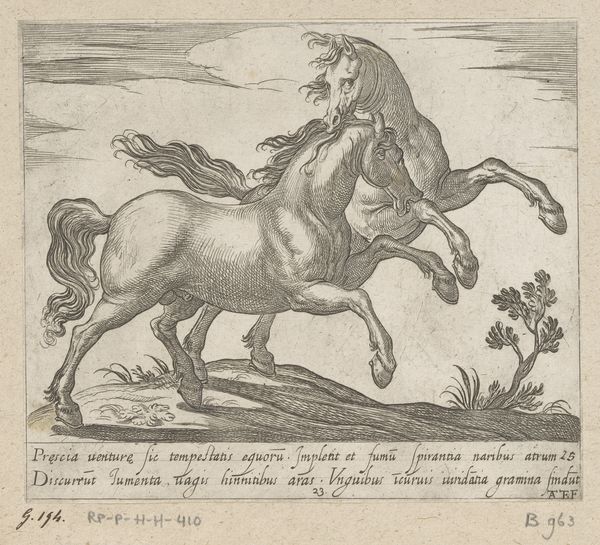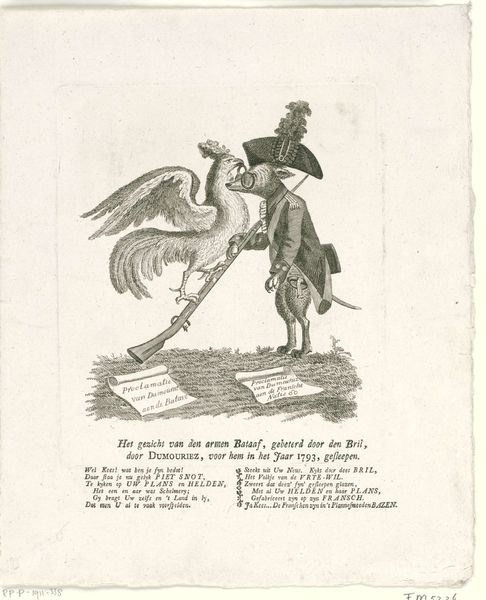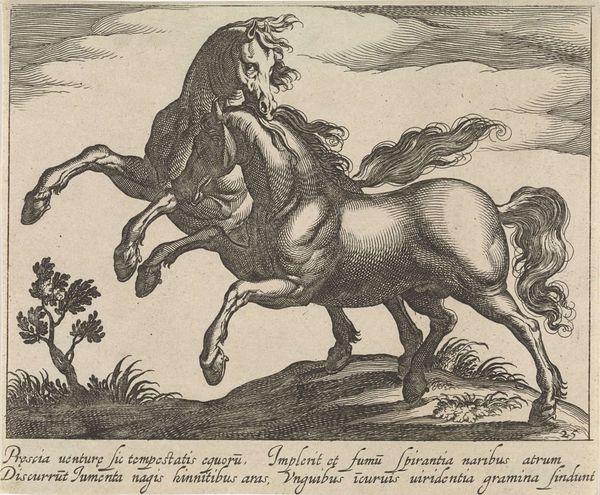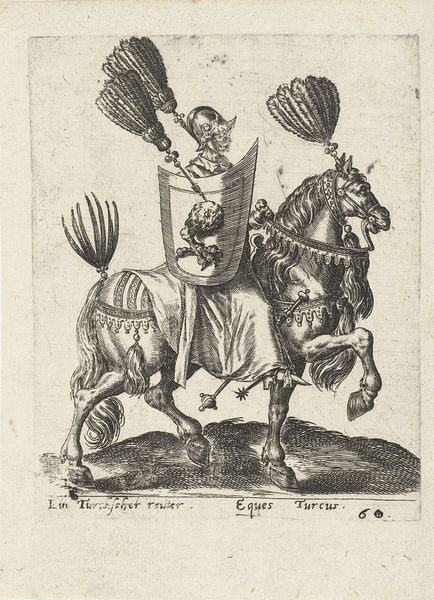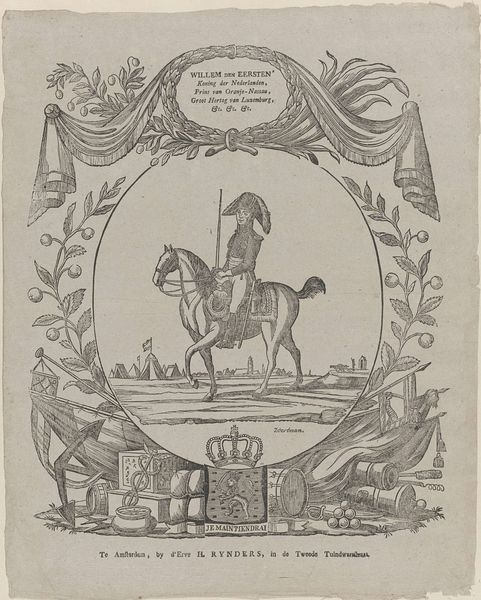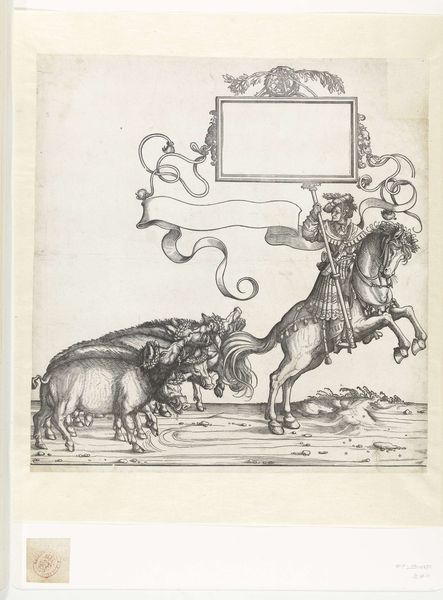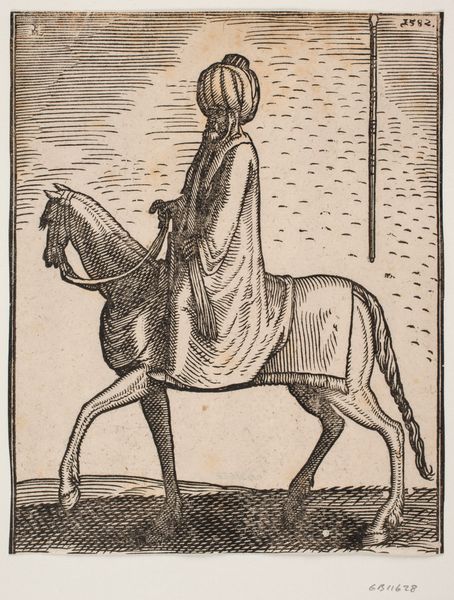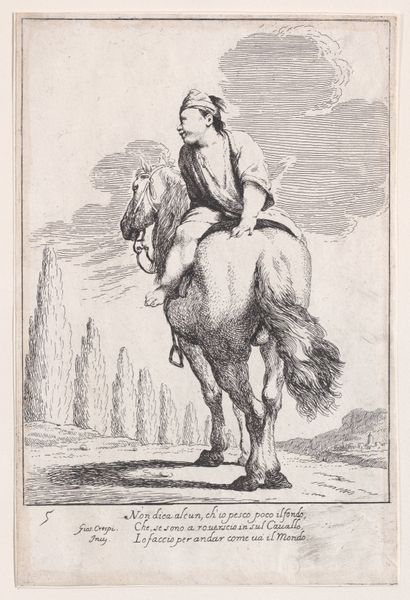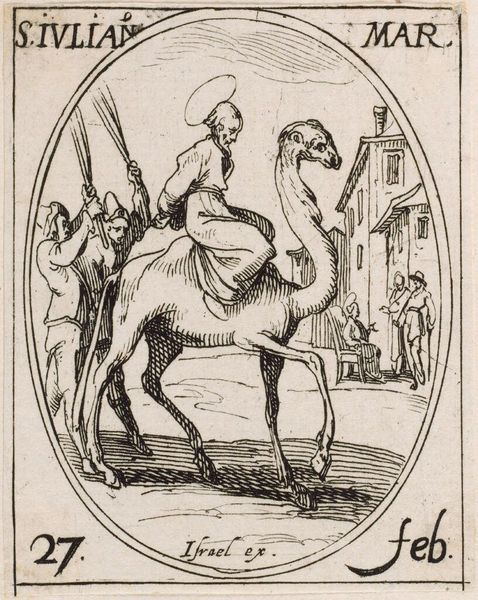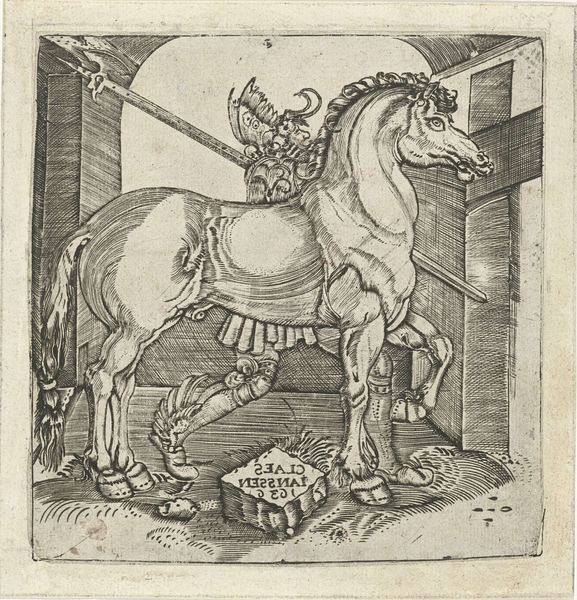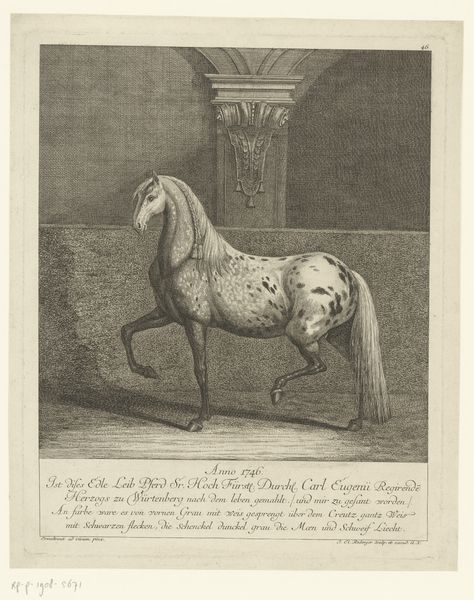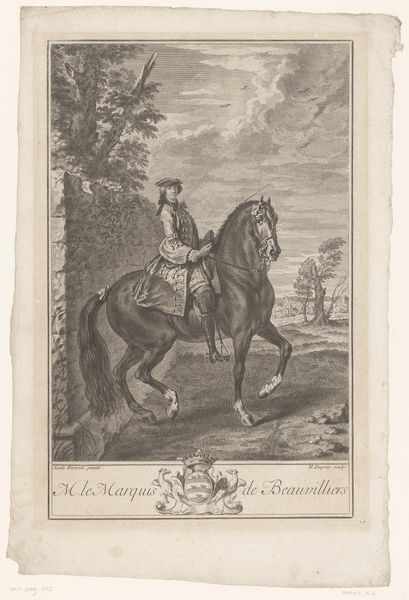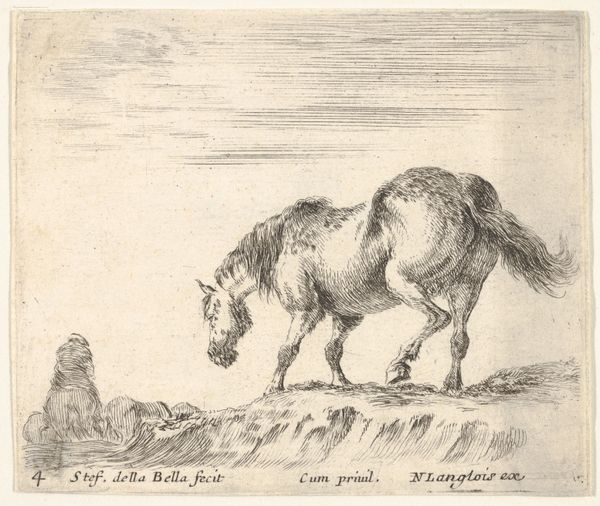
Beneath an archway, a groom holds the bridle of a horse shown in profile, facing left, the title page for 'Various cavalry exercises' (Diverses exercices de cavalerie) 1642 - 1645
0:00
0:00
drawing, print, etching, engraving
#
portrait
#
drawing
#
baroque
# print
#
etching
#
landscape
#
figuration
#
11_renaissance
#
horse
#
line
#
history-painting
#
engraving
Dimensions: Sheet: 3 7/16 x 2 13/16 in. (8.7 x 7.2 cm)
Copyright: Public Domain
Editor: So, here we have Stefano della Bella's etching from around the 1640s, the title page for 'Various Cavalry Exercises'. It’s quite striking how the horse and groom are presented almost like a sculptural monument within that archway. It’s very formal and stiff. What stands out to you? Curator: The archway is very interesting. It’s not merely architectural, it acts as a frame, directing our gaze but also subtly echoing the form of a proscenium. It's not simply about horses; it is carefully staged with specific iconographic and cultural significance for the time. The very formality hints at the cultural memory of ritual and display, doesn't it? Editor: Display, yes, I can see that. The horse is so elaborately draped. What symbols were being communicated here? Curator: Look closely at the decorations on the horse’s covering. The repeated patterns—those could well be heraldic devices. They spoke directly to a specific audience, signaling status, lineage, and power. What emotions or ideas might that trigger for viewers then, or even now? Consider, too, that horses were often symbolic of masculine power, control, even nobility. This image presents us with not just an animal, but a loaded symbol, deeply intertwined with the period’s socio-political fabric. Editor: It makes me think about how much information was packed into even seemingly simple images back then, a real visual language. I suppose now we’re not trained to see those nuances so readily. Curator: Precisely. And it reminds us to ask, what symbols are *we* creating, consciously or not, in our own visual culture today? We’ve decoded one layer but there is likely so much more at play that would take further work to uncover. Editor: This has definitely given me a new appreciation for the layers of meaning that artists embed in their work. I hadn’t thought of how the proscenium-like setting and heraldry combine to communicate power, especially within that period.
Comments
No comments
Be the first to comment and join the conversation on the ultimate creative platform.

